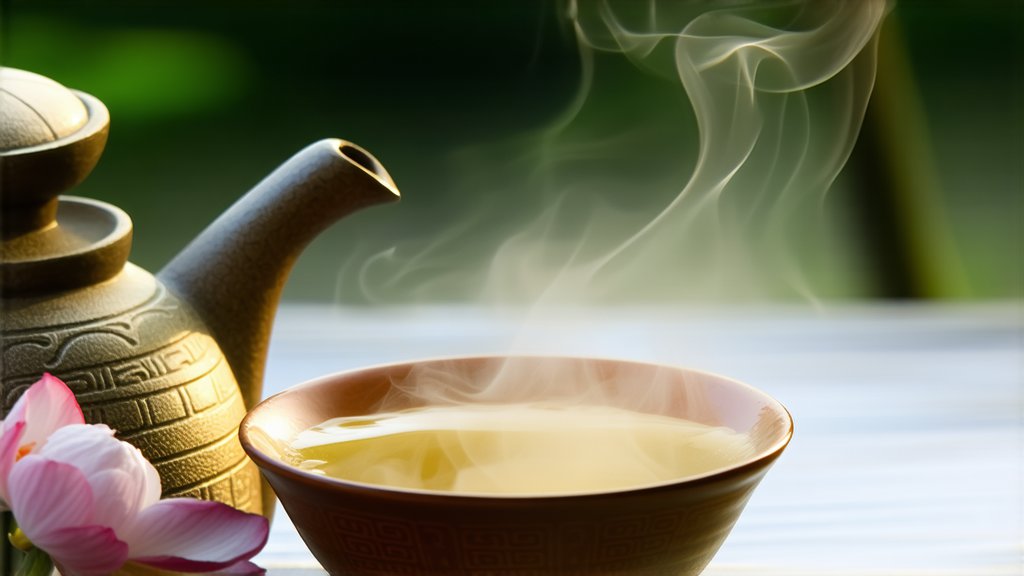
In the vast tapestry of Chinese tea culture, few varieties capture the imagination and senses quite like Fujian's White Peony (Bai Mudan), a tea that embodies the delicate balance between nature's bounty and artisanal mastery. This article embarks on a comprehensive exploration of White Peony tea, delving into its storied past, the intricate process of its cultivation and production, as well as the nuanced art of its appreciation.
A Glimpse into History
White Peony tea traces its roots back to the early Tang Dynasty (618-907 AD), a period marked by flourishing arts, literature, and the refinement of various cultural practices, including tea drinking. Legend has it that the tea was discovered by a tea farmer named Bai Mudan, whose name the tea bears, when he accidentally allowed his tea leaves to wither under the sun before drying them. This serendipitous event led to the creation of what would become one of China's most cherished white teas.
Throughout the centuries, White Peony tea evolved alongside China's rich tea heritage, gaining prominence during the Song Dynasty (960-1279 AD) when tea became not just a beverage but an integral part of scholarly pursuits and philosophical contemplation. It continued to thrive through subsequent dynasties, each contributing to its refinement and elevation in status.
Cultivation and Production: An Art Form
The magic of White Peony begins in the misty mountains of Fujian Province, where the climate, soil, and altitude create an ideal environment for cultivating high-quality tea. The tea bushes used for White Peony are primarily from the Camellia sinensis var. assamica species, known for their larger leaves and robust flavor profile.
Harvesting
Harvesting for White Peony typically occurs in late spring or early summer when the tender shoots and young leaves are at their peak freshness. Skilled tea pickers meticulously handpick only the top two or three leaves and a bud from each branch, ensuring that only the finest parts of the plant are used.
Withering
Once harvested, the freshly picked leaves undergo a crucial step called withering. Spread out thinly on bamboo mats or trays, they are left exposed to the gentle breeze and sunlight for several hours, allowing moisture to evaporate gradually. This process not only initiates fermentation but also helps develop the characteristic sweet aroma and taste associated with white teas.
Drying
After withering, the leaves enter the drying phase, which can be done either through sun drying or using specialized drying machines to maintain consistency. Sun drying imparts a more natural and subtle flavor while machine drying ensures uniformity and efficiency. The drying process further reduces moisture content, preserving the leaves for long-term storage without compromising quality.
Sorting and Grading
Post-drying, the tea leaves are carefully sorted and graded based on size, shape, and quality. The highest grades consist of silvery-white downy buds interspersed with green leaves, resembling the petals of a peony flower – hence the name 'White Peony.' Lower grades may contain more stems and less downy coverage but still offer a delightful taste experience.
The Art of Appreciation: Tasting White Peony Tea
To truly appreciate White Peony tea is to engage in a sensory journey that transcends mere consumption. Here’s a guide to savoring this exquisite brew:
-
Preparation: Begin by selecting a clear glass teapot or a Gaiwan (a traditional Chinese teacup with lid and saucer) to fully appreciate the visual beauty of the tea. Use water heated to approximately 80-85°C (175-185°F) to avoid scalding the delicate leaves.
-
Infusion: Place about 3-5 grams of loose leaf tea per 200ml of water ratio into the teapot. Steep for 1-2 minutes for the first infusion, allowing the flavors to unfurl gracefully. Subsequent infusions can be steeped progressively longer, coaxing out different layers of taste and aroma.
-
Observation: As the tea steeps, observe the transformation of the dry leaves into a vibrant dance within the water, resembling blooming flowers. Notice the color change from pale yellow-green to a deeper amber hue with each successive brew.
-
Aroma: Inhale deeply before taking your first sip to capture the subtle fragrance that emanates from the tea. White Peony offers a bouquet of floral notes, often described as orchid-like, complemented by hints of fruitiness and a whisper of sweetness.
-
Taste: Sip slowly, allowing the tea to coat your palate. Experience the initial sweetness followed by a gentle vegetal undertone, a signature characteristic of white teas. The texture should be smooth and silky, with a clean finish that invites another sip.
-
Appreciation: Take time to reflect on the experience, appreciating not just the taste but also the craftsmanship involved in creating such a tea. Each cup tells a story – of the land it came from, the hands that nurtured it, and the tradition it upholds.
Conclusion
Fujian's White Peony tea stands as a testament to China's enduring tea culture, embodying both historical depth and artistic sophistication. From its accidental discovery to becoming a symbol of elegance and refinement, it continues to captivate tea enthusiasts around the globe. Whether enjoyed alone as a moment of tranquility or shared among friends in a lively gathering, the art of appreciating White Peony tea invites us all to slow down, savor life's simple pleasures, one cup at a time.